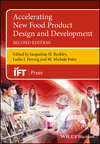RESPONSE SURFACE METHODOLOGY AND CONSUMER-DRIVEN PRODUCT OPTIMIZATION
Summary
This chapter begins with a short treatment of experimental design as applied to food and beverage. The fundamental experimental design comprises the change of one variable across a range. Two variables have several possibilities in the way they interact with each other. Experimental design leads naturally to modeling by regression analysis. The corporate reactions to experimental design have been mixed, not so much because of the true usefulness of design ensuing product optimization, but because of other factors that are probably emotional. When a company decides to use response surface methodology (RSM) technology, it incurs a number of costs and has to make several trade-offs. The easiest way to understand the RSM approach is through two case histories. The first case history deals with the selection of options from many different alternative ingredients, using experimental design and screening designs. The second case history deals with the actual optimization of a product formulation, subject to constraints.



